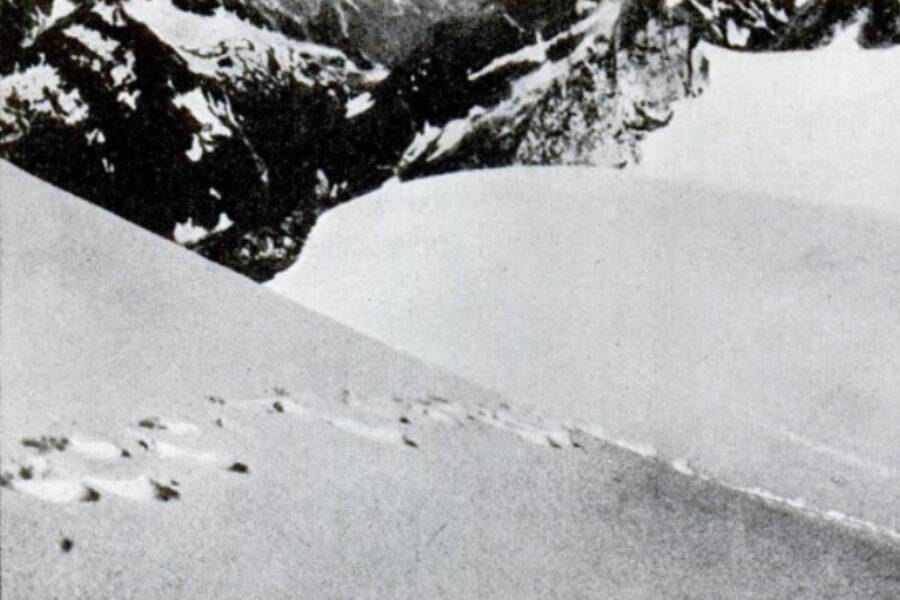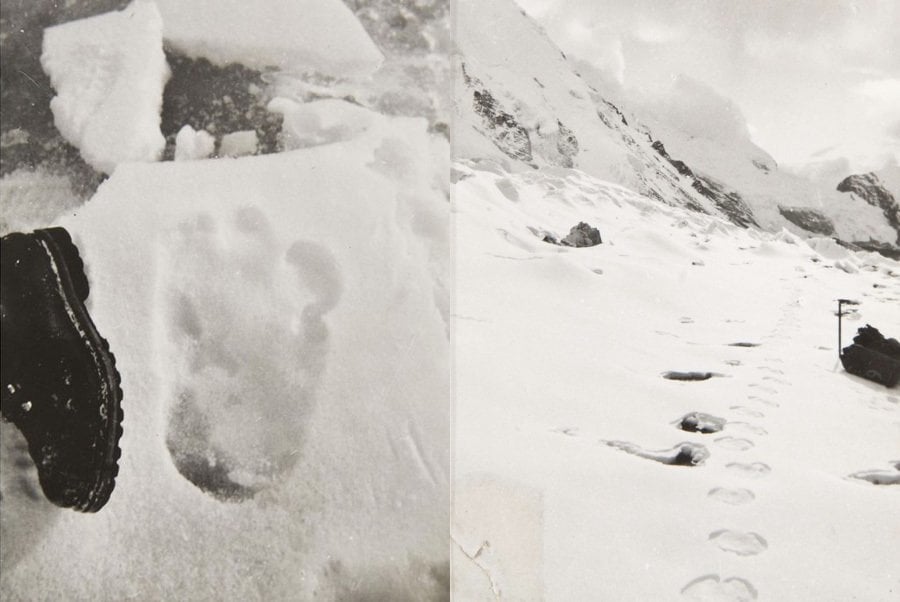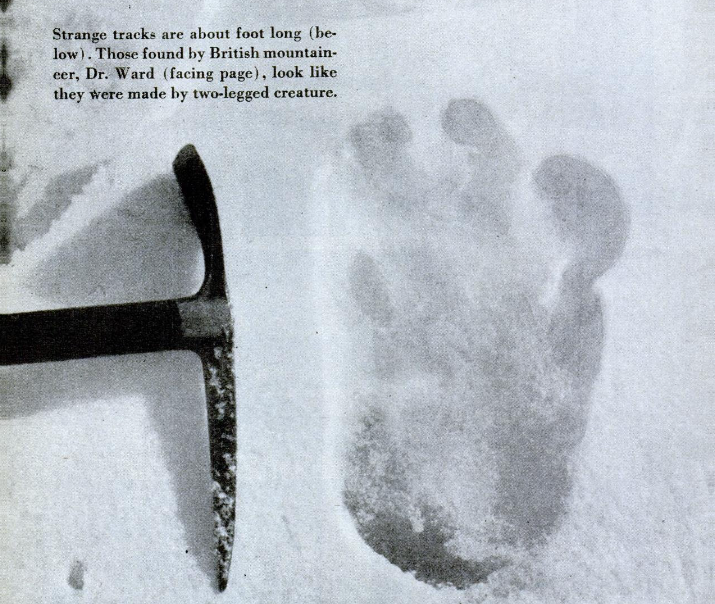The Yeti is a creature that purportedly lives high up in the Himalayan mountain region and other remote areas of Nepal and Bhutan, but despite numerous reports, there is little evidence of the creature's existence.

Public DomainA 1937 photograph of alleged Yeti footprints by Frank S. Smythe for Popular Science.
The Yeti has long been considered one of the more credible cryptids that could exist. Like Bigfoot, the Yeti has been described as an ape-like humanoid, though much larger than any man or ape, covered in thick, white fur. It is said to live among the Nepalese mountains, where rumors of its existence have long been whispered among locals.
Over the decades, there have been countless purported Yeti sightings, but for the longest time these were relegated to local legend. It wasn’t until the 19th century, with the account of Brian Houghton Hodgson, that Westerners first became aware of this Himalayan “wild man.” Hodson at the time speculated the creature may have been an orangutan, but further accounts in the early- and mid-20th century only added to the mystery.
In 1921, the Yeti received its other popular name, “The Abominable Snowman,” thanks to the account of Lieutenant-Colonel Charles Howard-Bury, who led a British reconnaissance expedition to Mount Everest that same year. Over the next few decades, the search for the Yeti became a point of fascination for explorers — and some even claimed to find evidence of the Yeti’s existence.
And while none of this evidence was necessarily conclusive, some of it was at the very least compelling.
Explorer Eric Shipton’s Photographs Of Yeti Footprints

Eric Shipton/Christie’s Alleged Yeti footprints photographed by Eric Shipton in the Menlung Basin, Nepal, 1951. These photographs sold at auction in 2014 for almost $12,000.
Although Yeti research has been marked by several high-profile claims and reports over the past few years, the golden age of Yeti research is widely considered to have occurred in the 1950s. In particular, it began in 1951 after renowned British mountaineer Eric Shipton and his colleague Dr. Michael Ward stumbled upon a series of peculiar footprints in the snow of the Menlung Basin.
As interest in summiting Everest peaked in the years following World War II, the British led a reconnaissance expedition up the mountain in order to scout out plans for a future ascent to the very top. Shipton had been put in charge of this expedition, though the mission’s original goal would ultimately be overshadowed by the strange discovery he made.
The Menlung Basin is situated at an elevation of approximately 15,000 to 16,000 feet, so it should be no surprise that Shipton and Ward were shocked to come across footprints so high up. But that wasn’t the only strange thing about them. At 12-13 inches long yet twice the width of an adult man’s foot (and with unusual toes), a depth suggestive of weight greater than a man’s, and claw marks nearby, these footprints almost certainly weren’t human.

Eric Shipton/Wikimedia CommonsAn ice axe used next to the purported Yeti footprint for scale.
Fortunately, Shipton photographed the prints and, lacking any traditional measuring tools, used available items like a boot, an ice axe, and a backpack — for scale, showing just how massive these prints truly were.
Fascinated by their discovery, Shipton and the expedition team traced the footprints down the glacier for nearly a mile before stopping to set up camp. Two days later, the sun and wind had cleared the prints themselves away, but when Shipton and his colleagues returned to Britain with the photographs, they garnered significant attention around the world, igniting a trend of speculation about the Yeti’s existence.
There were, of course, detractors as well. In fact, Ward himself suggested the prints may have belonged to locals with deformed feet, as such conditions were not uncommon in the region. The authenticity of Shipton’s photographs had also been a point of debate. Regardless, there is no denying that Shipton’s photographs marked a major moment in the search for the Abominable Snowman.
Surprisingly, though, Shipton’s photographs were not the first ever taken of an alleged Yeti footprint. In fact, just a few years earlier, another explorer by the name of C.R. Cooke also came across unusual footprints and snapped a few photographs.





